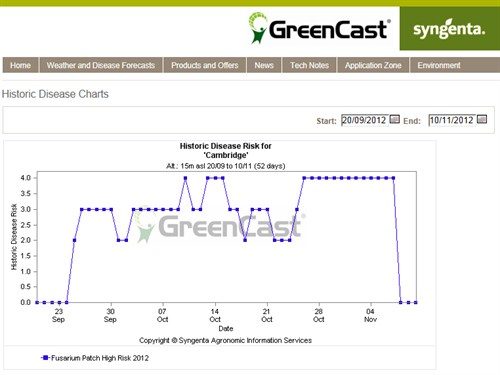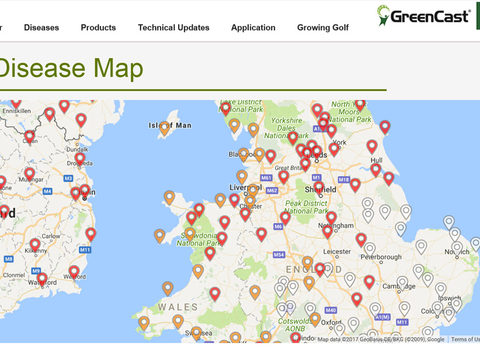GreenCast in UK and Ireland - MEET CHALLENGE OF EXTENDED AUTUMN

After record breaking warm and dry conditions in September, the arrival of October should herald the onset of autumn - and with it cooling, wetter weather.
But a review of weather patterns highlights that seasonal temperatures have typically risen two to three degrees over the past four decades. The trend is clearly now for warmer conditions continuing right through the autumn and early winter.
Table 1.OctoberUK average weather.October last year reinforced the trend to warmer growing conditions, and were a precursor to an incredibly mild open autumn and early winter that continued right through to the end of December.
Av Temp (°C) | Sun (hours) | Rain (mm) | Days with more than 1mm of rain | |||||
Diff to 30-yr av. | Diff to 30-yr av. | Diff to 30-yr av. | Diff to 30-yr av. | |||||
2013 | 11.2 | +1.9 | 78 | -12% | 163 | +46% | 19 | +5 |
2012 | 8.2 | -1.3 | 91 | -2% | 126 | -1% | 16 | +2 |
2011 | 11.3 | +2.0 | 90 | -3% | 123 | -3% | 16 | +2 |
2010 | 9.4 | +0.1 | 106 | +14% | 101 | -21% | 13 | -1 |
2009 | 10.4 | +1.2 | 85 | -9% | 108 | -15% | 14 | -2 |
30 year av. | 9.3 °C | 93 hrs. | 127 mm | 14 days | ||||
The changing weather patterns - including an increasing incidence of less frequent, but heavier rainfall - have significant implications for managing turf. GreenCast historic disease and weather records show that typically half of October days will see significant rain, with heavy dew on over 80% of mornings, which creates increased risk of Microdochium (Fusarium) Patch outbreak during the month.
The experience highlighted the elevated risk of infection through October (Fig 1). Periods of sustained disease pressure - even at reduced levels - could see infection symptoms break out.Poa annuadominant swards and areas with lush growth, restricted air flow, or deep thatch that remain wet for extended periods will be especially susceptible.

Fig 1. October 2012 highlighted the conditions conducive to Microdochium Patch. The risk jumped towards the end of September and remained high throughout October, before declining. Such information is crucial in timing fungicide programmes.
Disease threat
Initial reports this season are that theMicrodochium nivalepathogen is active, with outbreaks triggered by the onset of misty autumnal mornings in September an early warning of the potential winter risk.
During extended warm autumn growing conditions Banner Maxx will provide fast moving systemic protection. As growing conditions slow, the contact+Medallion TL will be more appropriate to reduce the pathogen presence in the thatch and protect the leaf through the cold.
The experience of 2012 has highlighted the value of proactive early treatments to reduce disease inoculum and give long-lasting protection through weather conducive to disease (Fig 1).
Continued growth
Warm wet weather can see grass growth continuing longer into the late autumn. However, dewy mornings and more frequent rainfall will also reduce opportunities for mowing. That means Primo Maxx growth regulator programmes may need to continue for longer - at least until soil temperatures decline and active growth slows.
The better growing conditions through October do give the opportunity to build carbohydrate reserves and strengthen turf ready for the winter. The use of Primo Maxx to increase chloroplast numbers in the leaf is even more important to improve the efficiency of light utilisation as daylight hours and light intensity falls.
Autumn nutrition
With the low rainfall over recent months and turf growth restricted in dry conditions, there is a chance that residual N levels may be higher now than in previous years. Turf managers must consider previous N inputs and nutrient uptake in calculating autumn applications tailored to avoid encouraging soft growth susceptible to disease attack.
Greenmaster Liquid fertilisers give a balanced release of N, enabling applications to be more effectively matched to growing conditions. Using a High K fertiliser and Effect Iron in October has also been shown to help build root reserves of carbohydrates and prepare turf plants for the rigours of winter.
| October Top Tips |
|
|
|
|



